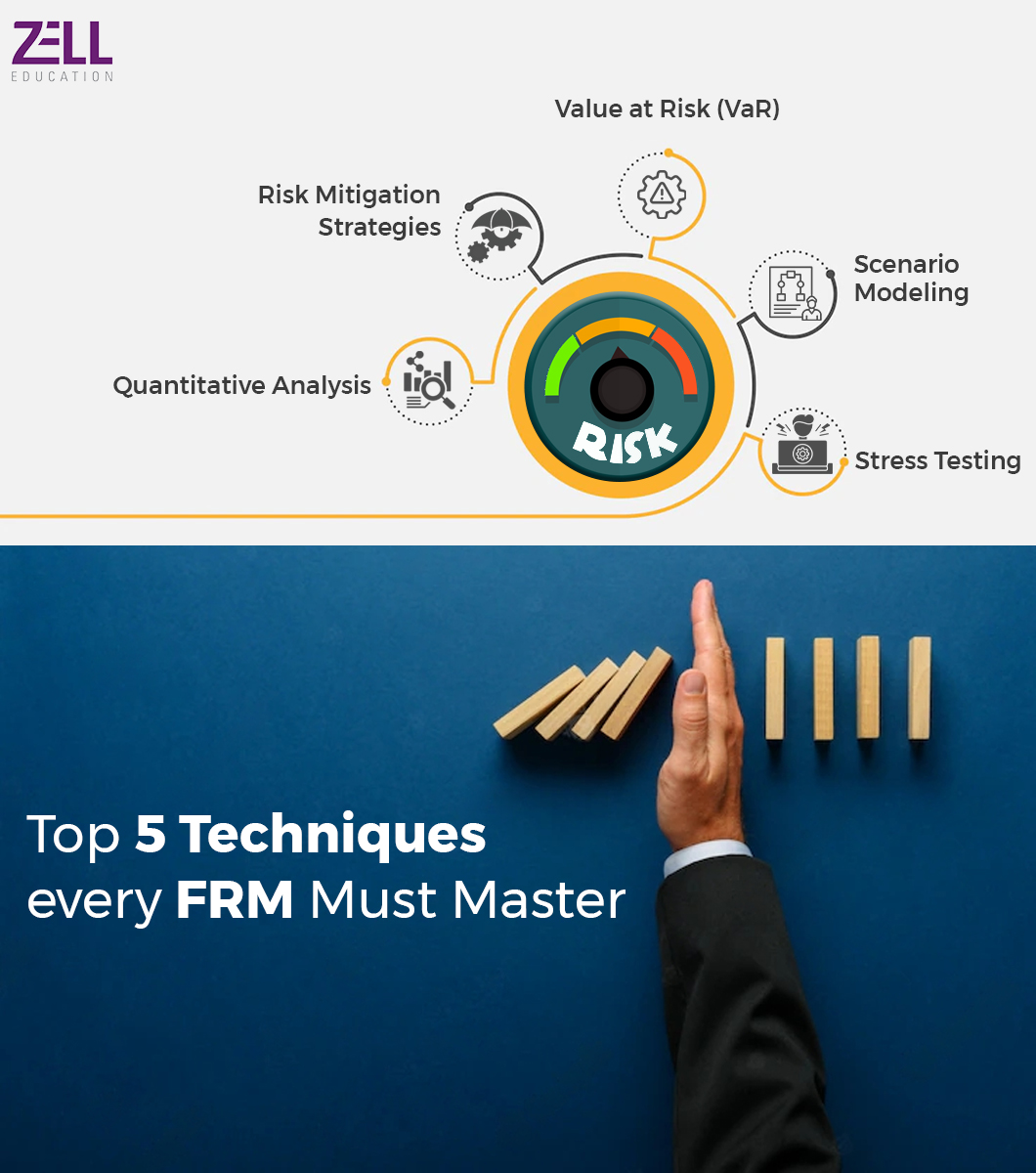5 Risk Management Techniques Every FRM Should Know
Last Update On 30th December 2024
Duration: 4 Mins Read
In the constantly changing world of finance, there is bound to be some risk. However, that is where the magic lies—in effective management. A Financial Risk Manager knows how to identify, analyse, and mitigate risks so that businesses are kept stable despite uncertainty. But with all these tools and strategies available, which one do you use first?
Relax, we’ve got you covered! Here are the 5 critical techniques in risk management every FRM certified professional should know in order not to fall behind the competition. Whether you’re reviewing for your FRM exam or just looking to enhance your skills in the industry, these time-tested approaches will become your toolkit to sail through financial risks like an expert. Let’s learn how to be the best risk management masters!
What is Risk Management?
Risk management is a structured process that considers risk identification, analysis, prioritising the identified risks, and undertaking the mitigation processes. Different tools and techniques are being applied within an organisation using risk assessment, audits, and even contingency planning to protect assets and reputation or overall stability of an enterprise. This risk management in a dynamic business environment offers the ability to cope with change and compliance and provides long-term resilience.
The risk management process identifies and assesses potential threats or uncertainties that may adversely affect the achievement of the organisation’s objectives. These sources of risk can include financial markets, legal liabilities, strategic decisions, operational failures, and natural disasters. If properly managed, this will ensure that an organisation proactively addresses these uncertainties while minimising adverse impacts and letting it take hold of the opportunities at hand.
Quantitative Analysis:
Quantitative analysis forms one of the core techniques used in risk management. This means using mathematical models, statistical methods, and analysing various approaches to measure and quantify risks. A good financial risk manager needs both financial skills and added quantitative skills to interpret complicated data, assess exposures towards certain risks, and place estimates on potential losses. Techniques like probability distributions, regression analyses, and correlation analyses provide FRMs with the opportunity to identify and understand the nature of the risks behind financial instruments and portfolios and their investment strategies.
Stress Testing:
This method identifies the negative effects on portfolios or financial systems produced under adverse conditions. n FRM runs stress tests for evaluating the impact of unfavourable circumstances on a portfolio through intense market scenarios. That said, FRMs simulate hypothetical negative events and test market circumstances to simulate potential vulnerability exposure and resultant losses due to weak risk management measures. Stress testing allows FRMs to anticipate weaknesses and apply relevant risk mitigation measures.
Scenario Modeling:
Scenario modelling involves creating hypothetical scenarios to evaluate the potential impact on portfolios and assess risk exposures. FRMs develop various scenarios that represent different market conditions, regulatory changes, or specific events to understand the potential outcomes and associated risks. Through scenario modelling, FRMs can assess the sensitivity of their portfolios to changing variables, identify potential risks, and adjust their risk management strategies accordingly.
Risk Mitigation Strategies:
Risk mitigation strategies are crucial in managing and reducing the impact of risks. FRMs should be well-versed in a range of risk mitigation techniques, such as diversification, hedging, and insurance. Diversification helps spread risk across different assets or markets, reducing the concentration of risk in a single investment. Hedging involves taking offsetting positions to mitigate the impact of adverse price movements. Insurance provides protection against specific risks. FRMs must understand and apply these strategies to effectively manage risks and protect their organisations from potential losses.
You can read our post related to “What Is Credit Risk Management?”
Value at Risk (VaR):
Value at Risk (VaR) is a widely used risk management measure that quantifies the potential loss in an investment or portfolio over a specified time horizon with a given level of confidence. FRMs employ VaR to estimate the maximum potential loss under normal market conditions or during adverse scenarios. VaR helps FRMs set risk limits, assess risk-adjusted returns, and make informed decisions regarding portfolio composition and risk management strategies. It serves as a valuable tool for measuring and comparing risks across different assets and investment portfolios.
Got Questions Regarding The FRM Course
Click Here for a Free Counselling Session
Conclusion
Mastering these top 5 risk management techniques is essential for FRMs to effectively manage and mitigate risks in the financial industry. By employing quantitative analysis, stress testing, scenario modelling, risk mitigation strategies, and Value at Risk (VaR), FRMs can gain valuable insights into risk exposures, make informed decisions, and protect their organisations from potential losses. FRMs can improve their risk management knowledge and contribute to the general stability and success of their organisations by polishing these crucial strategies by enrolling in an FRM course from Zell Education. It is crucial for FRMs to continually update their knowledge and stay abreast of emerging risk management techniques to adapt to the ever-changing financial landscape.

